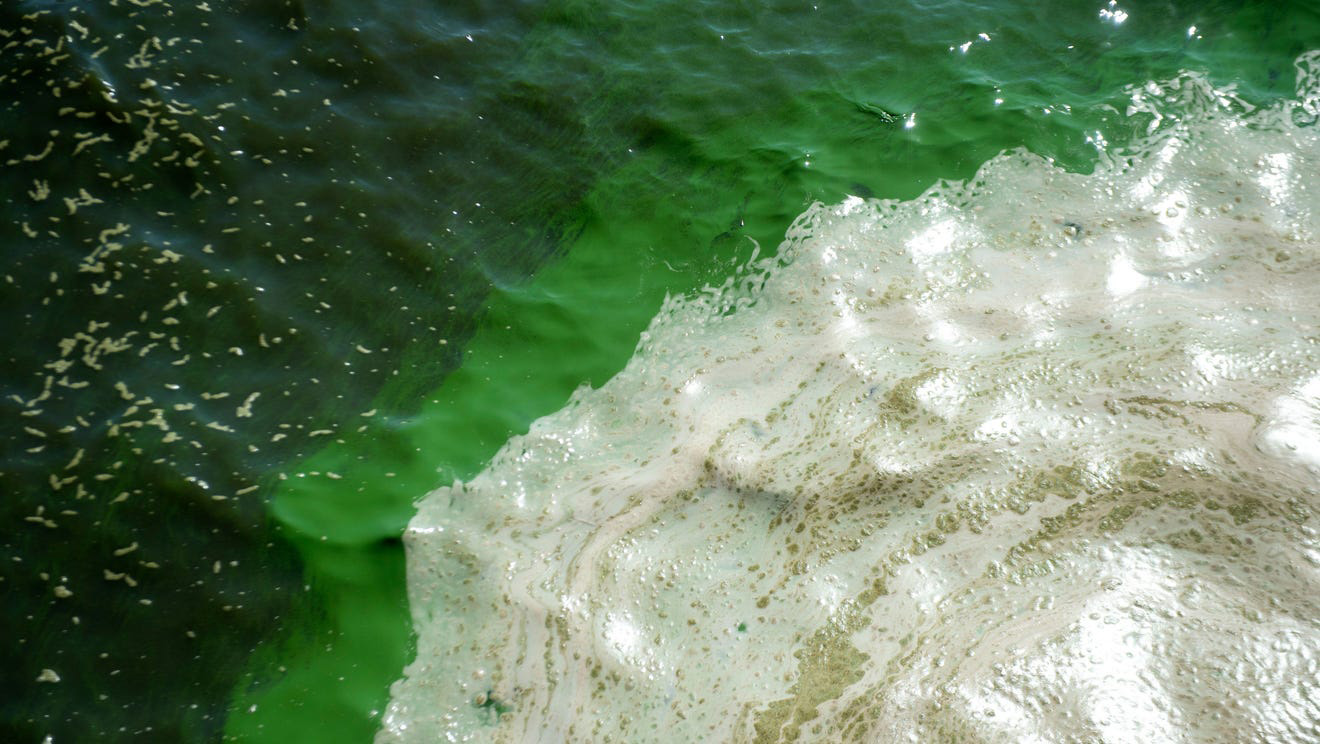
The Florida Department of Health earlier this month chained warning signs to guardrails near the Port Mayaca Lock & Dam, where toxic algae intensified to 15 times higher than federal guidelines deem unsafe.
“CAUTION: Blue-green algae may be in these waters,” the signs read.
But there were no signs in Spanish in the area, a popular fishing and recreational spot frequented by Hispanic residents from the nearby Village of Indiantown.
Indian Riverkeeper Mike Conner wanted to change that.
“I just thought it was unfair that the signs there were only in English,” he told TCPalm Tuesday. “It’s a human health hazard. People need to know what they’re looking at, what they’re touching, what they’re dealing with when fishing there.”
Conner appealed to the DOH office in Martin County, which issued an avoid-water advisory for the Port Mayaca area on April 16.
Five days later, DOH heeded Conner’s request and posted two signs written in Spanish on the north and south sides of the lock, which are common entry points for anglers, Environmental Manager Nick Clifton told TCPalm Tuesday.
The cyanobacteria, more commonly called “blue-green algae,” contained 120 parts per billion of the toxin microsystin last week, according to state data. At 8 parts per billion, microsystin makes water too hazardous to touch, ingest or inhale for people, pets and wildlife, according to the U.S. Environmental Protection Agency.
“It is a very broad, Spanish-speaking community, so (the signs) definitely needed to be out there,” Clifton said.
English-only warning signs also were posted last month around the Phipps Park boat ramp and at the entrance to the St. Lucie Lock & Dam, after March 29 water samples measured low traces of microsystin, according to health officials.
DOH will conduct health education and outreach as needed around Indiantown and elsewhere if data shows the toxic algae moving east through the C-44 Canal, Clifton said. The canal connects to the St. Lucie River via the St. Lucie Lock & Dam. Water can flow as far as the Indian River Lagoon and Atlantic Ocean beaches, as it did in 2018.
“These signs need to be looked at as an important kind of first step,” Lake Worth Waterkeeper Reinaldo Diaz told TCPalm Tuesday. “They are important because we really need to do our best to educate the public on just how risky this stuff is to our health.”
Toxic algae can cause nausea and vomiting if ingested, and a rash or hay fever symptoms if touched or inhaled. Drinking the water can cause long-term liver disease. Some research indicates a link between long-term inhalation and neurological ailments such as Alzheimer’s, Parkinson’s and Lou Gehrig’s diseases.
Diaz called the effects of toxic algae on minority communities a form of environmental racism in an April 10 blog post. He cited an ongoing algae bloom at the Pahokee Campground & Marina that was affecting Glades County residents.
